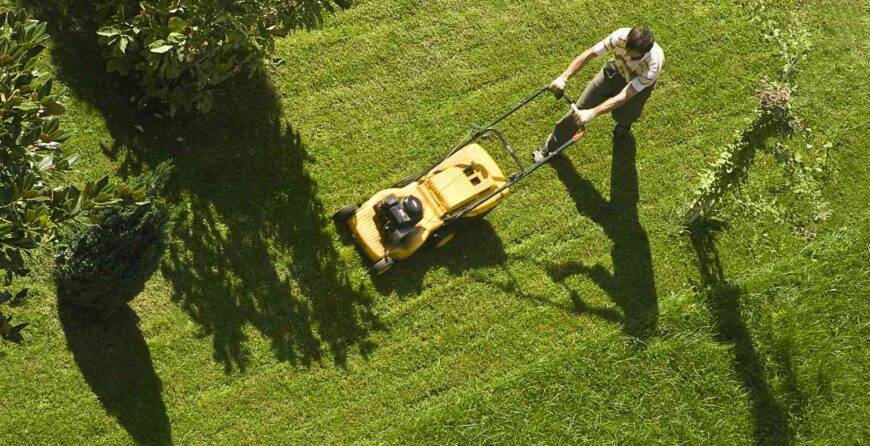Lawn care is an essential aspect of maintaining a beautiful and functional outdoor space. A well-kept lawn not only enhances the aesthetic appeal of your property but also provides a lush and inviting area for relaxation and recreation. At PaveRose, we understand that achieving and maintaining a pristine lawn requires a combination of expert knowledge, proper techniques, and consistent care. This comprehensive guide will cover all aspects of lawn care, including its importance, key practices, seasonal considerations, and tips for achieving a vibrant and healthy lawn.
Why Lawn Care Matters
1. Enhancing Aesthetic Appeal
A well-maintained lawn significantly enhances the visual appeal of your property. It creates a cohesive and polished look, contributing to the overall beauty of your landscape. A lush, green lawn can transform your outdoor space into a picturesque setting, making it a welcoming area for family gatherings, outdoor activities, and relaxation.
2. Promoting Environmental Benefits
A healthy lawn provides numerous environmental benefits. It helps to improve air quality by absorbing carbon dioxide and releasing oxygen. Additionally, lawns play a role in reducing soil erosion, managing stormwater runoff, and supporting local wildlife by providing habitat and food sources. By maintaining a healthy lawn, you contribute to a greener and more sustainable environment.
3. Increasing Property Value
A well-kept lawn can increase the value of your property. Potential buyers often view a beautiful lawn as a significant asset, enhancing curb appeal and making your home more attractive in the real estate market. Investing in lawn care can result in a higher return on investment and make your property stand out.
4. Providing Recreational Space
A well-maintained lawn offers a versatile space for recreational activities. Whether you enjoy playing sports, hosting outdoor events, or simply relaxing in the sun, a healthy lawn provides a comfortable and functional area for various activities. It creates an inviting environment for family and friends to enjoy the outdoors.
5. Reducing Stress
Spending time in a well-cared-for lawn can reduce stress and promote mental well-being. Green spaces have been shown to have calming effects, improving mood and providing a sense of tranquility. A beautifully maintained lawn creates a peaceful retreat where you can unwind and escape from the demands of daily life.
Key Practices for Lawn Care
1. Mowing
Proper Mowing Techniques
Regular mowing is essential for maintaining a healthy and attractive lawn. Mow your lawn regularly to keep the grass at an optimal height. Avoid cutting more than one-third of the grass height at a time to prevent stress and promote healthy growth. Adjust your mower blades based on the type of grass and its growth rate to achieve an even cut.
Mowing Schedule
The frequency of mowing depends on factors such as grass type, growth rate, and seasonal conditions. During the growing season, mow your lawn weekly to maintain its appearance. In cooler months or during periods of slower growth, reduce the frequency of mowing. Regular mowing helps prevent the development of weeds and keeps your lawn looking neat and tidy.
2. Fertilizing
Choosing the Right Fertilizer
Fertilizing provides essential nutrients that promote healthy grass growth. Choose a balanced fertilizer with a mix of nitrogen, phosphorus, and potassium to support overall lawn health. Consider using slow-release fertilizers to provide a steady supply of nutrients over time.
Application Timing and Techniques
Apply fertilizer according to the recommended schedule for your grass type and local climate. Typically, lawns benefit from fertilization in early spring and late summer or fall. Follow application instructions carefully to avoid over-fertilizing, which can lead to thatch buildup and environmental issues. Use a spreader for even application and water the lawn after fertilizing to help nutrients penetrate the soil.
3. Aeration
Benefits of Lawn Aeration
Aeration involves perforating the soil to improve air and water penetration. This process helps reduce soil compaction, enhances root growth, and improves overall lawn health. Aeration is especially beneficial for lawns with heavy foot traffic or clay soil.
When and How to Aerate
Perform lawn aeration annually, preferably in the fall or spring. Use a core aerator to remove small plugs of soil from the lawn, allowing air, water, and nutrients to reach the root zone. After aeration, leave the soil plugs on the lawn to decompose and return organic matter to the soil.
4. Watering
Proper Watering Techniques
Watering is crucial for maintaining a healthy lawn, especially during hot and dry periods. Water your lawn deeply and infrequently to encourage deep root growth. Aim to provide about one inch of water per week, either through rainfall or irrigation.
Watering Schedule
Water your lawn early in the morning to reduce evaporation and minimize the risk of fungal diseases. Adjust watering schedules based on weather conditions, grass type, and soil moisture levels. Avoid over-watering, which can lead to shallow root growth and increased susceptibility to pests and diseases.
5. Weeding
Identifying and Managing Weeds
Weeds compete with grass for nutrients, water, and sunlight, which can negatively impact lawn health. Regularly inspect your lawn for weeds and take action to manage them. Use a combination of hand weeding, mulching, and herbicides to control weed populations.
Preventing Weed Growth
Preventing weed growth involves maintaining a healthy lawn through proper mowing, fertilizing, and watering practices. A dense and vigorous lawn is better able to outcompete weeds and reduce their establishment. Apply pre-emergent herbicides in early spring to prevent weed seeds from germinating.
6. Pest and Disease Control
Monitoring for Pests and Diseases
Regularly inspect your lawn for signs of pests and diseases. Common lawn pests include grubs, chinch bugs, and armyworms, while diseases can range from fungal infections to bacterial issues. Early detection and prompt treatment are essential for managing pest and disease problems effectively.
Integrated Pest Management
Use integrated pest management (IPM) strategies to control pests and diseases. IPM involves combining biological, cultural, and mechanical methods to manage issues with minimal chemical use. For example, encourage beneficial insects that prey on lawn pests and use disease-resistant grass varieties.
Seasonal Lawn Care Considerations
Spring
Spring is a time of renewal and growth for your lawn. Begin by cleaning up any winter debris and performing essential tasks such as fertilizing, aerating, and overseeding. Address any damage from winter weather and prepare your lawn for the growing season.
Summer
Summer maintenance focuses on managing heat and drought conditions. Adjust your watering schedule to meet the needs of your lawn, and monitor for signs of pests and diseases. Continue regular mowing and avoid excessive foot traffic on the lawn to prevent stress.
Fall
Fall is an important time for preparing your lawn for winter. Rake leaves and remove debris to prevent smothering and promote air circulation. Fertilize and overseed as needed to improve lawn health and prepare for the next growing season.
Winter
Winter maintenance involves protecting your lawn from harsh weather conditions. Avoid walking on frozen grass and remove snow and ice from pathways to prevent damage. Use winter months to prepare for spring by inspecting tools and equipment and planning your lawn care strategy.
Tips for Successful Lawn Care
1. Create a Lawn Care Plan
Developing a lawn care plan helps you stay organized and ensures that all essential tasks are completed on schedule. Consider factors such as grass type, soil conditions, and local climate when creating your plan. Regularly review and adjust your plan based on the changing needs of your lawn.
2. Invest in Quality Tools and Products
Using high-quality lawn care tools and products ensures effective maintenance and long-lasting results. Invest in sharp, well-maintained tools for mowing, edging, and other tasks. Choose fertilizers, herbicides, and other products that are appropriate for your grass type and soil conditions.
3. Stay Informed
Staying informed about best practices and new developments in lawn care helps you keep your lawn in top condition. Read gardening guides, attend workshops, and seek advice from lawn care professionals to stay up-to-date with the latest techniques and products.
4. Prioritize Sustainability
Incorporating sustainable practices into your lawn care routine benefits both your lawn and the environment. Use organic fertilizers and pest control methods, conserve water, and recycle lawn clippings through composting. Sustainable practices help create a healthier and more eco-friendly lawn.
5. Seek Professional Assistance
If lawn care tasks become overwhelming or if you lack the time or expertise to manage them effectively, consider seeking professional assistance. PaveRose offers comprehensive lawn care services, including mowing, fertilizing, aeration, and pest control. Our team of experts can provide tailored solutions to meet your lawn’s unique needs and ensure it remains healthy and beautiful.
Conclusion
Lawn care is a critical aspect of maintaining a beautiful and functional outdoor space. At PaveRose, we are committed to helping you achieve a thriving lawn through expert care and attention to detail. From routine maintenance tasks to seasonal considerations and sustainable practices, our comprehensive services ensure that every aspect of your lawn receives the care it needs. By investing in regular lawn care and implementing best practices, you can enjoy a lush, vibrant lawn that enhances your property’s value and provides lasting enjoyment. Contact PaveRose today to learn more about our lawn care services and discover how we can help you create and maintain a stunning outdoor oasis.
#LawnCare #GardeningTips #PaveRose #GardenMaintenance #UKGardening #HealthyLawn #LawnCareGuide #OutdoorLiving #LawnCareTips #GreenThumb #LawnMaintenance #GrassCare #LawnCareUK #GardeningUK #LawnCareServices #GardeningAdvice #BeautifulLawns #LandscapeDesign #GardenCare #EcoFriendlyGardening




